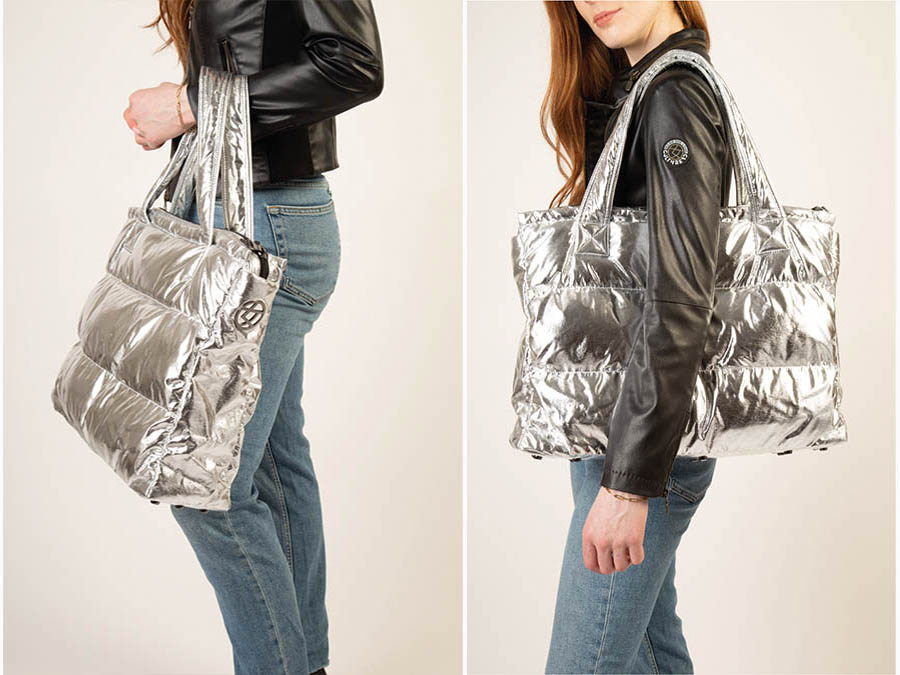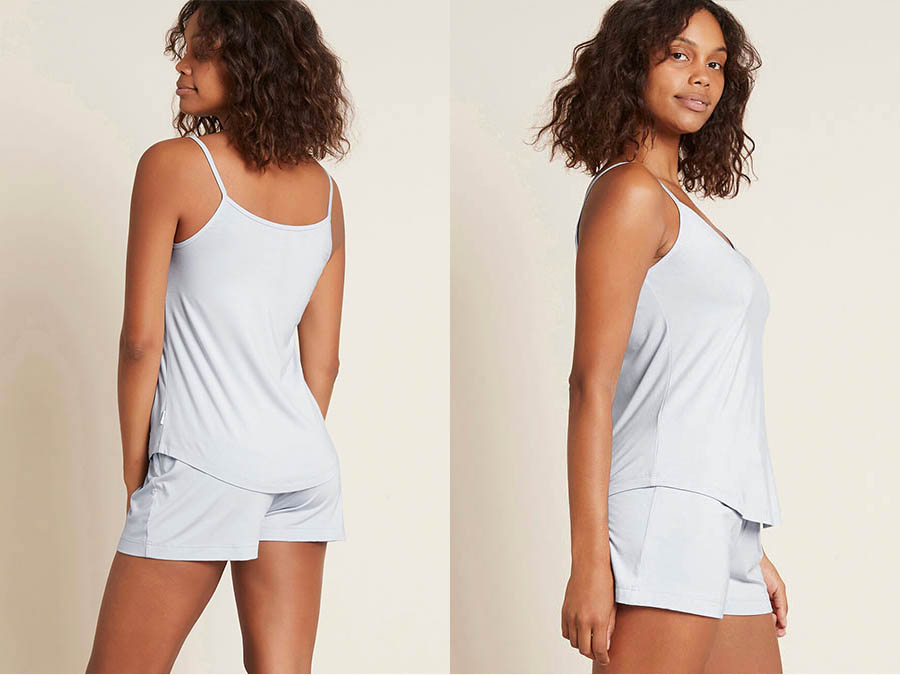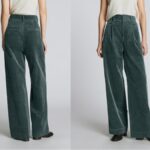Tips How To Choose Sustainable Dresses
How To Buy Best Organic Lipsticks
Tips How To Choose Sustainable Dresses
How To Buy Best Organic Lipsticks
Tips How To Choose Sustainable Dresses
How To Buy Best Organic Lipsticks
Tips How To Choose Sustainable Dresses
How To Buy Best Organic Lipsticks
Tips How To Choose Sustainable Dresses
How To Buy Best Organic Lipsticks
10 Tips To Buying Sustainable Shoes
Tips How To Choose Sustainable Dresses
How To Buy Best Organic Lipsticks
Tips How To Choose Sustainable Dresses
Tips How To Choose Sustainable Dresses
With spring and summer in our sights, it’s time to put away our warm winter clothing and switch out to lighter fashion for the seasons ahead.
Keeping sustainability in mind, it’s about getting that dress that makes you look good but that is kind to the environment.
Here at sustainablefashion.ie, we have selected 10 things to consider when buying a sustainable dress this season
1. Seek Out Organic Fabrics
Opt for dresses made from organic cotton, linen, hemp, or bamboo. These fabrics are grown without harmful pesticides and chemicals, reducing environmental impact.
2. Always Look for Certifications
Look for certifications like Global Organic Textile Standard (GOTS) or OEKO-TEX Standard 100, which ensure the dress meets certain environmental and social criteria.
3. Try and choose Dresses that Use Natural Dyes
Look for dresses dyed with natural, plant-based dyes instead of synthetic ones, which can be harmful to the environment and human health.
4. Always Prioritise Ethical Production
Choose dresses from brands that prioritise fair labour practices and provide transparency about their supply chain.
5. Why Not Opt for Timeless Styles
Invest in dresses with timeless designs and high-quality construction that will last for multiple seasons, reducing the need for frequent replacements.
6. Important to Support Local Brands
Look for dresses made by local designers or brands to reduce the carbon footprint associated with transportation and support local economies.
7. Second-Hand Dresses are a Great Option
Explore thrift stores, consignment shops, or online marketplaces for pre-loved dresses. Buying second-hand reduces waste and extends the lifespan of clothing.
8. Important to Check for Recycled Materials
Some dresses are made from recycled materials such as plastic bottles or recycled polyester. Look for dresses that incorporate recycled materials to reduce waste.
9. Look at Minimal Packaging
Choose dresses from brands that use minimal packaging or opt for packaging made from recycled or biodegradable materials to reduce waste.
10. Always Read Reviews and Do Your Own Research
Before making a purchase, read reviews and research the brand’s sustainability practices to ensure they align with your values.
By following these tips, you can make more sustainable choices when selecting dresses for the spring and summer seasons.
Top 5 Style of Dresses That Will Be Trending This Spring
Now you know how to but that perfect sustainable dress this spring, let’s look at the top 5 styles that will be trending in 2024.
1. The Floral Dress
Floral prints are a classic choice for spring, bringing a touch of nature and vibrancy to your wardrobe.
Whether it’s large, bold blooms or delicate floral patterns, these dresses evoke a sense of freshness and renewal that aligns perfectly with the season.
2. Pastel Dresses
Soft pastel hues like blush pink, baby blue, mint green, and lavender are quintessential spring colours.
Dresses in these shades exude femininity and elegance, making them perfect for springtime gatherings, brunches, or outdoor events.
3. The Wrap Dress
Wrap dresses are universally flattering and versatile, making them a staple for any season, including spring.
Their adjustable waist tie and draped silhouette accentuate curves beautifully, while their lightweight fabrics offer comfort and breathability, ideal for warmer weather.
4. The Bohemian Maxi Dress
Flowy, bohemian maxi dresses capture the relaxed spirit of spring. With their loose silhouettes, ethereal fabrics, and intricate details like embroidery or crochet, these dresses exude effortless boho-chic style, perfect for picnics in the park or music festivals.
5. Midi Shirt Dresses
Midi shirt dresses combine the casual appeal of a shirt with the feminine charm of a dress, making them a trendy and practical choice for spring.
Whether in crisp organic cotton, lightweight organic linen, or soft chambray, these dresses offer easy elegance and can be dressed up or down for various occasions. Check out our featured Linen Dress from Thought Fashion.
And Finally
These styles capture the essence of spring with their light fabrics, playful patterns, and flattering silhouettes, ensuring you’ll look stylish and seasonally appropriate wherever you go
How To Buy Best Organic Lipsticks
How To Buy Best Organic Lipsticks
Lipstick is that every day “go to” beauty product that every woman has either in her makeup bag and purse right?
How better is it to know that your lippy is made from organic material which is good for your lips. Here at sustainablefashion.ie, we have picked out 10 things to look out for when buying organic lippy.
1. They Must Have Approved Certification
Look for a certification logo from a recognized organic certification body, such as USDA Organic or COSMOS Organic. This ensures that the product meets specific organic standards.
2. Organic Ingredients
Check the ingredient list for natural and organic components. Avoid synthetic dyes, fragrances, and preservatives, opting instead for plant-based ingredients like oils, waxes, and pigments.
3. Check for Natural Colouring
Seek out lipsticks that use natural pigments derived from sources like fruits, vegetables, and minerals. These provide colour without relying on synthetic dyes.
4. Check for Moisturising Ingredients
Look for moisturizing ingredients like shea butter, coconut oil, and jojoba oil. These help keep your lips hydrated and prevent them from drying out.
5. It Must Have Longevity
Consider the longevity of the lipstick. While organic lipsticks may not last as long as their conventional counterparts, look for formulas that strike a balance between natural ingredients and staying power.
6. Check Texture and Finish
Determine whether you prefer a matte, satin, or glossy finish, and choose a lipstick that offers the texture and finish you desire.
7. They Must be Non-Toxic
Ensure that the lipstick is free from harmful chemicals such as parabens, phthalates, and lead. Opting for organic options reduces the likelihood of exposure to these toxins.
8. They must Ethically Sourced
Look for brands that prioritize ethical sourcing of ingredients, fair labour practices, and environmentally friendly manufacturing processes.
9. Check Packaging
Consider the packaging of the product. Look for options that use eco-friendly materials or offer refillable containers to minimise waste.
10. Always Look at Reviews and Reputation of Product
Research the brand’s reputation and read reviews from other customers to gauge the quality, performance, and overall satisfaction with the product.
By considering these factors, you can make an informed decision when purchasing organic lipstick that aligns with your preferences and values.
5 Key Ingredients Found in Organic Lipstick
Organic lipsticks typically contain ingredients that are derived from natural sources and are free from synthetic chemicals. Here are five key ingredients commonly found in organic lipstick formulations.
1. Plant-Based Oils
Organic lipsticks often contain nourishing oils like coconut oil, jojoba oil, argan oil, or avocado oil. These oils provide moisturization and help to keep lips soft and hydrated.
2. Beeswax or Plant-Based Waxes
Beeswax is a common ingredient in organic lipsticks, but some formulations may use plant-based waxes like candelilla wax or carnauba wax instead. Waxes help to give lipstick its structure and provide a smooth application.
3. Natural pigments
Organic lipsticks get their colour from natural pigments derived from sources like fruits, vegetables, minerals, or flowers.
Common natural pigments include beetroot extract, carmine (derived from insects), titanium dioxide (for white shades), and iron oxides (for red and brown shades).
4. Essential Oils
Essential oils are often added to organic lipsticks for fragrance and additional skincare benefits. Common essential oils used include lavender oil, peppermint oil, and citrus oils. They can provide a pleasant scent and may offer antimicrobial or soothing properties.
5. Natural preservatives
To prevent microbial growth and prolong the shelf life of organic lipsticks, natural preservatives are used.
These may include vitamin E (tocopherol), rosemary extract, or grapefruit seed extract. They help maintain the integrity of the product without relying on synthetic preservatives like parabens.
And Finally
When choosing an organic lipstick, it’s essential to review the ingredient list to ensure it aligns with your preferences and needs.
Tips How To Choose Sustainable Dresses
How To Buy Best Organic Lipsticks
Tips How To Choose Sustainable Dresses
How To Buy Best Organic Lipsticks
10 Tips To Buying Sustainable Shoes
Tips How To Choose Sustainable Dresses
With spring and summer in our sights, it’s time to put away our warm winter clothing and switch out to lighter fashion for the seasons ahead.
Keeping sustainability in mind, it’s about getting that dress that makes you look good but that is kind to the environment.
Here at sustainablefashion.ie, we have selected 10 things to consider when buying a sustainable dress this season
1. Seek Out Organic Fabrics
Opt for dresses made from organic cotton, linen, hemp, or bamboo. These fabrics are grown without harmful pesticides and chemicals, reducing environmental impact.
2. Always Look for Certifications
Look for certifications like Global Organic Textile Standard (GOTS) or OEKO-TEX Standard 100, which ensure the dress meets certain environmental and social criteria.
3. Try and choose Dresses that Use Natural Dyes
Look for dresses dyed with natural, plant-based dyes instead of synthetic ones, which can be harmful to the environment and human health.
4. Always Prioritise Ethical Production
Choose dresses from brands that prioritise fair labour practices and provide transparency about their supply chain.
5. Why Not Opt for Timeless Styles
Invest in dresses with timeless designs and high-quality construction that will last for multiple seasons, reducing the need for frequent replacements.
6. Important to Support Local Brands
Look for dresses made by local designers or brands to reduce the carbon footprint associated with transportation and support local economies.
7. Second-Hand Dresses are a Great Option
Explore thrift stores, consignment shops, or online marketplaces for pre-loved dresses. Buying second-hand reduces waste and extends the lifespan of clothing.
8. Important to Check for Recycled Materials
Some dresses are made from recycled materials such as plastic bottles or recycled polyester. Look for dresses that incorporate recycled materials to reduce waste.
9. Look at Minimal Packaging
Choose dresses from brands that use minimal packaging or opt for packaging made from recycled or biodegradable materials to reduce waste.
10. Always Read Reviews and Do Your Own Research
Before making a purchase, read reviews and research the brand’s sustainability practices to ensure they align with your values.
By following these tips, you can make more sustainable choices when selecting dresses for the spring and summer seasons.
Top 5 Style of Dresses That Will Be Trending This Spring
Now you know how to but that perfect sustainable dress this spring, let’s look at the top 5 styles that will be trending in 2024.
1. The Floral Dress
Floral prints are a classic choice for spring, bringing a touch of nature and vibrancy to your wardrobe.
Whether it’s large, bold blooms or delicate floral patterns, these dresses evoke a sense of freshness and renewal that aligns perfectly with the season.
2. Pastel Dresses
Soft pastel hues like blush pink, baby blue, mint green, and lavender are quintessential spring colours.
Dresses in these shades exude femininity and elegance, making them perfect for springtime gatherings, brunches, or outdoor events.
3. The Wrap Dress
Wrap dresses are universally flattering and versatile, making them a staple for any season, including spring.
Their adjustable waist tie and draped silhouette accentuate curves beautifully, while their lightweight fabrics offer comfort and breathability, ideal for warmer weather.
4. The Bohemian Maxi Dress
Flowy, bohemian maxi dresses capture the relaxed spirit of spring. With their loose silhouettes, ethereal fabrics, and intricate details like embroidery or crochet, these dresses exude effortless boho-chic style, perfect for picnics in the park or music festivals.
5. Midi Shirt Dresses
Midi shirt dresses combine the casual appeal of a shirt with the feminine charm of a dress, making them a trendy and practical choice for spring.
Whether in crisp organic cotton, lightweight organic linen, or soft chambray, these dresses offer easy elegance and can be dressed up or down for various occasions. Check out our featured Linen Dress from Thought Fashion.
And Finally
These styles capture the essence of spring with their light fabrics, playful patterns, and flattering silhouettes, ensuring you’ll look stylish and seasonally appropriate wherever you go

How To Buy Best Organic Lipsticks
Lipstick is that every day “go to” beauty product that every woman has either in her makeup bag and purse right?
How better is it to know that your lippy is made from organic material which is good for your lips. Here at sustainablefashion.ie, we have picked out 10 things to look out for when buying organic lippy.
1. They Must Have Approved Certification
Look for a certification logo from a recognized organic certification body, such as USDA Organic or COSMOS Organic. This ensures that the product meets specific organic standards.
2. Organic Ingredients
Check the ingredient list for natural and organic components. Avoid synthetic dyes, fragrances, and preservatives, opting instead for plant-based ingredients like oils, waxes, and pigments.
3. Check for Natural Colouring
Seek out lipsticks that use natural pigments derived from sources like fruits, vegetables, and minerals. These provide colour without relying on synthetic dyes.
4. Check for Moisturising Ingredients
Look for moisturizing ingredients like shea butter, coconut oil, and jojoba oil. These help keep your lips hydrated and prevent them from drying out.
5. It Must Have Longevity
Consider the longevity of the lipstick. While organic lipsticks may not last as long as their conventional counterparts, look for formulas that strike a balance between natural ingredients and staying power.
6. Check Texture and Finish
Determine whether you prefer a matte, satin, or glossy finish, and choose a lipstick that offers the texture and finish you desire.
7. They Must be Non-Toxic
Ensure that the lipstick is free from harmful chemicals such as parabens, phthalates, and lead. Opting for organic options reduces the likelihood of exposure to these toxins.
8. They must Ethically Sourced
Look for brands that prioritize ethical sourcing of ingredients, fair labour practices, and environmentally friendly manufacturing processes.
9. Check Packaging
Consider the packaging of the product. Look for options that use eco-friendly materials or offer refillable containers to minimise waste.
10. Always Look at Reviews and Reputation of Product
Research the brand’s reputation and read reviews from other customers to gauge the quality, performance, and overall satisfaction with the product.
By considering these factors, you can make an informed decision when purchasing organic lipstick that aligns with your preferences and values.
5 Key Ingredients Found in Organic Lipstick
Organic lipsticks typically contain ingredients that are derived from natural sources and are free from synthetic chemicals. Here are five key ingredients commonly found in organic lipstick formulations.
1. Plant-Based Oils
Organic lipsticks often contain nourishing oils like coconut oil, jojoba oil, argan oil, or avocado oil. These oils provide moisturization and help to keep lips soft and hydrated.
2. Beeswax or Plant-Based Waxes
Beeswax is a common ingredient in organic lipsticks, but some formulations may use plant-based waxes like candelilla wax or carnauba wax instead. Waxes help to give lipstick its structure and provide a smooth application.
3. Natural pigments
Organic lipsticks get their colour from natural pigments derived from sources like fruits, vegetables, minerals, or flowers.
Common natural pigments include beetroot extract, carmine (derived from insects), titanium dioxide (for white shades), and iron oxides (for red and brown shades).
4. Essential Oils
Essential oils are often added to organic lipsticks for fragrance and additional skincare benefits. Common essential oils used include lavender oil, peppermint oil, and citrus oils. They can provide a pleasant scent and may offer antimicrobial or soothing properties.
5. Natural preservatives
To prevent microbial growth and prolong the shelf life of organic lipsticks, natural preservatives are used.
These may include vitamin E (tocopherol), rosemary extract, or grapefruit seed extract. They help maintain the integrity of the product without relying on synthetic preservatives like parabens.
And Finally
When choosing an organic lipstick, it’s essential to review the ingredient list to ensure it aligns with your preferences and needs.

Tips To Buying Sustainable Shoes
Sustainable footwear sales are increasing year on year and this is by no accident. Shoes made using sustainable material and ethically produced are not only good for the environment but also good for the people responsible for making them.
Here at Sustainablefashion.ie, we are going to look at tips to help you buy sustainable shoes the easy way.
Top 5 Benefits of Buying Sustainable Shoes
Investing in sustainable shoes offers numerous advantages, both for you and the environment. Here are the top five benefits.
1. It Helps Reduce Environmental Impact
Sustainable shoes are typically made from eco-friendly materials such as recycled plastics, organic cotton, hemp, or natural rubber.
By choosing these materials, you help reduce the demand for virgin resources and minimize pollution from the manufacturing process.
2. It Supports Ethical Practices
Many sustainable shoe brands prioritize fair labour practices and ethical manufacturing processes.
This means workers are treated fairly, paid decent wages, and work in safe conditions. By purchasing from these brands, you contribute to the improvement of workers’ lives in the fashion industry.
3. Better Lifespan Of Shoes
Sustainable shoes are often crafted with durability in mind. They tend to be higher quality and made to last longer than their fast fashion counterparts.
This means you’ll need to replace them less frequently, ultimately saving money in the long run and reducing the amount of shoes ending up in landfills.
4. It is Healthier for Your Feet
Sustainable shoe materials are often free from harmful chemicals and toxins commonly found in non-sustainable footwear.
This can reduce the risk of skin irritation, allergies, and other health issues associated with prolonged exposure to such substances.
5. It Contributes to the Circular Economy
Some sustainable shoe brands incorporate circular economy principles into their business models.
This means they design their products with end-of-life solutions in mind, such as offering repair services or facilitating recycling programs.
By supporting these brands, you contribute to the development of a more sustainable and circular economy. Check out our featured Pointed-Toe Kitten Heels from Vivala which are made from recycled plastic bottles.
Summary
Overall, purchasing sustainable shoes not only benefits you as a consumer but also plays a crucial role in promoting environmental conservation and social responsibility within the fashion industry.
Top 10 Tips To Remember When Buying Sustainable Shoes
Now you know the benefits of buying sustainable footwear, let’s look how to do this to ensure you get the right sustainable shoes for you.
1. Make Sure to Research Brands
Look for brands that prioritize sustainability in their production processes. Many brands now focus on using eco-friendly materials and ethical labour practices.
2. Opt for Eco-friendly Materials
Opt for shoes made from sustainable materials like organic cotton, hemp, recycled polyester, or TENCEL™ Lyocell.
These materials have a lower environmental impact compared to traditional ones like synthetic leather or conventional cotton.
3. Look for Recycled Materials
Seek out shoes made from recycled materials, such as recycled rubber soles or uppers made from recycled plastics or fabrics.
4. Vegan Options are Good
Consider choosing vegan shoes that don’t use any animal-derived materials. Vegan leather alternatives made from materials like cork, pineapple fibers (Piñatex), or mushroom leather (mycelium) are becoming increasingly popular.
5. Look for Certifications
Look for shoes certified by reputable sustainability organizations like the Global Organic Textile Standard (GOTS), the Forest Stewardship Council (FSC), or the Leather Working Group (LWG).
6. Make Sure They Have Durability
Invest in high-quality shoes that are durable and long-lasting. While they may be pricier upfront, they’ll save you money in the long run and reduce the need for frequent replacements, which is better for the environment.
7. What is Their Repairability?
Choose shoes that are easy to repair. Look for brands that offer repair services or provide replacement parts like soles or laces, extending the life of your shoes.
8. Opt for Minimal Packaging
Consider the packaging of the shoes. Opt for brands that use minimal or eco-friendly packaging to reduce waste.
9. Look Carbon Footprint Reduction
Look for brands that prioritise reducing their carbon footprint by using renewable energy sources in their production processes or offsetting carbon emissions.
10. Always Support Ethical Labour Practices
Support brands that ensure fair wages and safe working conditions for their workers. Look for certifications like Fair Trade or B Corporation, indicating a commitment to social and environmental responsibility.
And Finally
By following these tips, you can make more sustainable choices when buying shoes, contributing to a healthier planet and a more ethical fashion industry.

Tips How To Choose Sustainable Dresses
With spring and summer in our sights, it’s time to put away our warm winter clothing and switch out to lighter fashion for the seasons ahead.
Keeping sustainability in mind, it’s about getting that dress that makes you look good but that is kind to the environment.
Here at sustainablefashion.ie, we have selected 10 things to consider when buying a sustainable dress this season
1. Seek Out Organic Fabrics
Opt for dresses made from organic cotton, linen, hemp, or bamboo. These fabrics are grown without harmful pesticides and chemicals, reducing environmental impact.
2. Always Look for Certifications
Look for certifications like Global Organic Textile Standard (GOTS) or OEKO-TEX Standard 100, which ensure the dress meets certain environmental and social criteria.
3. Try and choose Dresses that Use Natural Dyes
Look for dresses dyed with natural, plant-based dyes instead of synthetic ones, which can be harmful to the environment and human health.
4. Always Prioritise Ethical Production
Choose dresses from brands that prioritise fair labour practices and provide transparency about their supply chain.
5. Why Not Opt for Timeless Styles
Invest in dresses with timeless designs and high-quality construction that will last for multiple seasons, reducing the need for frequent replacements.
6. Important to Support Local Brands
Look for dresses made by local designers or brands to reduce the carbon footprint associated with transportation and support local economies.
7. Second-Hand Dresses are a Great Option
Explore thrift stores, consignment shops, or online marketplaces for pre-loved dresses. Buying second-hand reduces waste and extends the lifespan of clothing.
8. Important to Check for Recycled Materials
Some dresses are made from recycled materials such as plastic bottles or recycled polyester. Look for dresses that incorporate recycled materials to reduce waste.
9. Look at Minimal Packaging
Choose dresses from brands that use minimal packaging or opt for packaging made from recycled or biodegradable materials to reduce waste.
10. Always Read Reviews and Do Your Own Research
Before making a purchase, read reviews and research the brand’s sustainability practices to ensure they align with your values.
By following these tips, you can make more sustainable choices when selecting dresses for the spring and summer seasons.
Top 5 Style of Dresses That Will Be Trending This Spring
Now you know how to but that perfect sustainable dress this spring, let’s look at the top 5 styles that will be trending in 2024.
1. The Floral Dress
Floral prints are a classic choice for spring, bringing a touch of nature and vibrancy to your wardrobe.
Whether it’s large, bold blooms or delicate floral patterns, these dresses evoke a sense of freshness and renewal that aligns perfectly with the season.
2. Pastel Dresses
Soft pastel hues like blush pink, baby blue, mint green, and lavender are quintessential spring colours.
Dresses in these shades exude femininity and elegance, making them perfect for springtime gatherings, brunches, or outdoor events.
3. The Wrap Dress
Wrap dresses are universally flattering and versatile, making them a staple for any season, including spring.
Their adjustable waist tie and draped silhouette accentuate curves beautifully, while their lightweight fabrics offer comfort and breathability, ideal for warmer weather.
4. The Bohemian Maxi Dress
Flowy, bohemian maxi dresses capture the relaxed spirit of spring. With their loose silhouettes, ethereal fabrics, and intricate details like embroidery or crochet, these dresses exude effortless boho-chic style, perfect for picnics in the park or music festivals.
5. Midi Shirt Dresses
Midi shirt dresses combine the casual appeal of a shirt with the feminine charm of a dress, making them a trendy and practical choice for spring.
Whether in crisp organic cotton, lightweight organic linen, or soft chambray, these dresses offer easy elegance and can be dressed up or down for various occasions. Check out our featured Linen Dress from Thought Fashion.
And Finally
These styles capture the essence of spring with their light fabrics, playful patterns, and flattering silhouettes, ensuring you’ll look stylish and seasonally appropriate wherever you go

How To Buy Best Organic Lipsticks
Lipstick is that every day “go to” beauty product that every woman has either in her makeup bag and purse right?
How better is it to know that your lippy is made from organic material which is good for your lips. Here at sustainablefashion.ie, we have picked out 10 things to look out for when buying organic lippy.
1. They Must Have Approved Certification
Look for a certification logo from a recognized organic certification body, such as USDA Organic or COSMOS Organic. This ensures that the product meets specific organic standards.
2. Organic Ingredients
Check the ingredient list for natural and organic components. Avoid synthetic dyes, fragrances, and preservatives, opting instead for plant-based ingredients like oils, waxes, and pigments.
3. Check for Natural Colouring
Seek out lipsticks that use natural pigments derived from sources like fruits, vegetables, and minerals. These provide colour without relying on synthetic dyes.
4. Check for Moisturising Ingredients
Look for moisturizing ingredients like shea butter, coconut oil, and jojoba oil. These help keep your lips hydrated and prevent them from drying out.
5. It Must Have Longevity
Consider the longevity of the lipstick. While organic lipsticks may not last as long as their conventional counterparts, look for formulas that strike a balance between natural ingredients and staying power.
6. Check Texture and Finish
Determine whether you prefer a matte, satin, or glossy finish, and choose a lipstick that offers the texture and finish you desire.
7. They Must be Non-Toxic
Ensure that the lipstick is free from harmful chemicals such as parabens, phthalates, and lead. Opting for organic options reduces the likelihood of exposure to these toxins.
8. They must Ethically Sourced
Look for brands that prioritize ethical sourcing of ingredients, fair labour practices, and environmentally friendly manufacturing processes.
9. Check Packaging
Consider the packaging of the product. Look for options that use eco-friendly materials or offer refillable containers to minimise waste.
10. Always Look at Reviews and Reputation of Product
Research the brand’s reputation and read reviews from other customers to gauge the quality, performance, and overall satisfaction with the product.
By considering these factors, you can make an informed decision when purchasing organic lipstick that aligns with your preferences and values.
5 Key Ingredients Found in Organic Lipstick
Organic lipsticks typically contain ingredients that are derived from natural sources and are free from synthetic chemicals. Here are five key ingredients commonly found in organic lipstick formulations.
1. Plant-Based Oils
Organic lipsticks often contain nourishing oils like coconut oil, jojoba oil, argan oil, or avocado oil. These oils provide moisturization and help to keep lips soft and hydrated.
2. Beeswax or Plant-Based Waxes
Beeswax is a common ingredient in organic lipsticks, but some formulations may use plant-based waxes like candelilla wax or carnauba wax instead. Waxes help to give lipstick its structure and provide a smooth application.
3. Natural pigments
Organic lipsticks get their colour from natural pigments derived from sources like fruits, vegetables, minerals, or flowers.
Common natural pigments include beetroot extract, carmine (derived from insects), titanium dioxide (for white shades), and iron oxides (for red and brown shades).
4. Essential Oils
Essential oils are often added to organic lipsticks for fragrance and additional skincare benefits. Common essential oils used include lavender oil, peppermint oil, and citrus oils. They can provide a pleasant scent and may offer antimicrobial or soothing properties.
5. Natural preservatives
To prevent microbial growth and prolong the shelf life of organic lipsticks, natural preservatives are used.
These may include vitamin E (tocopherol), rosemary extract, or grapefruit seed extract. They help maintain the integrity of the product without relying on synthetic preservatives like parabens.
And Finally
When choosing an organic lipstick, it’s essential to review the ingredient list to ensure it aligns with your preferences and needs.

Tips To Buying Sustainable Shoes
Sustainable footwear sales are increasing year on year and this is by no accident. Shoes made using sustainable material and ethically produced are not only good for the environment but also good for the people responsible for making them.
Here at Sustainablefashion.ie, we are going to look at tips to help you buy sustainable shoes the easy way.
Top 5 Benefits of Buying Sustainable Shoes
Investing in sustainable shoes offers numerous advantages, both for you and the environment. Here are the top five benefits.
1. It Helps Reduce Environmental Impact
Sustainable shoes are typically made from eco-friendly materials such as recycled plastics, organic cotton, hemp, or natural rubber.
By choosing these materials, you help reduce the demand for virgin resources and minimize pollution from the manufacturing process.
2. It Supports Ethical Practices
Many sustainable shoe brands prioritize fair labour practices and ethical manufacturing processes.
This means workers are treated fairly, paid decent wages, and work in safe conditions. By purchasing from these brands, you contribute to the improvement of workers’ lives in the fashion industry.
3. Better Lifespan Of Shoes
Sustainable shoes are often crafted with durability in mind. They tend to be higher quality and made to last longer than their fast fashion counterparts.
This means you’ll need to replace them less frequently, ultimately saving money in the long run and reducing the amount of shoes ending up in landfills.
4. It is Healthier for Your Feet
Sustainable shoe materials are often free from harmful chemicals and toxins commonly found in non-sustainable footwear.
This can reduce the risk of skin irritation, allergies, and other health issues associated with prolonged exposure to such substances.
5. It Contributes to the Circular Economy
Some sustainable shoe brands incorporate circular economy principles into their business models.
This means they design their products with end-of-life solutions in mind, such as offering repair services or facilitating recycling programs.
By supporting these brands, you contribute to the development of a more sustainable and circular economy. Check out our featured Pointed-Toe Kitten Heels from Vivala which are made from recycled plastic bottles.
Summary
Overall, purchasing sustainable shoes not only benefits you as a consumer but also plays a crucial role in promoting environmental conservation and social responsibility within the fashion industry.
Top 10 Tips To Remember When Buying Sustainable Shoes
Now you know the benefits of buying sustainable footwear, let’s look how to do this to ensure you get the right sustainable shoes for you.
1. Make Sure to Research Brands
Look for brands that prioritize sustainability in their production processes. Many brands now focus on using eco-friendly materials and ethical labour practices.
2. Opt for Eco-friendly Materials
Opt for shoes made from sustainable materials like organic cotton, hemp, recycled polyester, or TENCEL™ Lyocell.
These materials have a lower environmental impact compared to traditional ones like synthetic leather or conventional cotton.
3. Look for Recycled Materials
Seek out shoes made from recycled materials, such as recycled rubber soles or uppers made from recycled plastics or fabrics.
4. Vegan Options are Good
Consider choosing vegan shoes that don’t use any animal-derived materials. Vegan leather alternatives made from materials like cork, pineapple fibers (Piñatex), or mushroom leather (mycelium) are becoming increasingly popular.
5. Look for Certifications
Look for shoes certified by reputable sustainability organizations like the Global Organic Textile Standard (GOTS), the Forest Stewardship Council (FSC), or the Leather Working Group (LWG).
6. Make Sure They Have Durability
Invest in high-quality shoes that are durable and long-lasting. While they may be pricier upfront, they’ll save you money in the long run and reduce the need for frequent replacements, which is better for the environment.
7. What is Their Repairability?
Choose shoes that are easy to repair. Look for brands that offer repair services or provide replacement parts like soles or laces, extending the life of your shoes.
8. Opt for Minimal Packaging
Consider the packaging of the shoes. Opt for brands that use minimal or eco-friendly packaging to reduce waste.
9. Look Carbon Footprint Reduction
Look for brands that prioritise reducing their carbon footprint by using renewable energy sources in their production processes or offsetting carbon emissions.
10. Always Support Ethical Labour Practices
Support brands that ensure fair wages and safe working conditions for their workers. Look for certifications like Fair Trade or B Corporation, indicating a commitment to social and environmental responsibility.
And Finally
By following these tips, you can make more sustainable choices when buying shoes, contributing to a healthier planet and a more ethical fashion industry.

Tips How To Choose Sustainable Dresses
With spring and summer in our sights, it’s time to put away our warm winter clothing and switch out to lighter fashion for the seasons ahead.
Keeping sustainability in mind, it’s about getting that dress that makes you look good but that is kind to the environment.
Here at sustainablefashion.ie, we have selected 10 things to consider when buying a sustainable dress this season
1. Seek Out Organic Fabrics
Opt for dresses made from organic cotton, linen, hemp, or bamboo. These fabrics are grown without harmful pesticides and chemicals, reducing environmental impact.
2. Always Look for Certifications
Look for certifications like Global Organic Textile Standard (GOTS) or OEKO-TEX Standard 100, which ensure the dress meets certain environmental and social criteria.
3. Try and choose Dresses that Use Natural Dyes
Look for dresses dyed with natural, plant-based dyes instead of synthetic ones, which can be harmful to the environment and human health.
4. Always Prioritise Ethical Production
Choose dresses from brands that prioritise fair labour practices and provide transparency about their supply chain.
5. Why Not Opt for Timeless Styles
Invest in dresses with timeless designs and high-quality construction that will last for multiple seasons, reducing the need for frequent replacements.
6. Important to Support Local Brands
Look for dresses made by local designers or brands to reduce the carbon footprint associated with transportation and support local economies.
7. Second-Hand Dresses are a Great Option
Explore thrift stores, consignment shops, or online marketplaces for pre-loved dresses. Buying second-hand reduces waste and extends the lifespan of clothing.
8. Important to Check for Recycled Materials
Some dresses are made from recycled materials such as plastic bottles or recycled polyester. Look for dresses that incorporate recycled materials to reduce waste.
9. Look at Minimal Packaging
Choose dresses from brands that use minimal packaging or opt for packaging made from recycled or biodegradable materials to reduce waste.
10. Always Read Reviews and Do Your Own Research
Before making a purchase, read reviews and research the brand’s sustainability practices to ensure they align with your values.
By following these tips, you can make more sustainable choices when selecting dresses for the spring and summer seasons.
Top 5 Style of Dresses That Will Be Trending This Spring
Now you know how to but that perfect sustainable dress this spring, let’s look at the top 5 styles that will be trending in 2024.
1. The Floral Dress
Floral prints are a classic choice for spring, bringing a touch of nature and vibrancy to your wardrobe.
Whether it’s large, bold blooms or delicate floral patterns, these dresses evoke a sense of freshness and renewal that aligns perfectly with the season.
2. Pastel Dresses
Soft pastel hues like blush pink, baby blue, mint green, and lavender are quintessential spring colours.
Dresses in these shades exude femininity and elegance, making them perfect for springtime gatherings, brunches, or outdoor events.
3. The Wrap Dress
Wrap dresses are universally flattering and versatile, making them a staple for any season, including spring.
Their adjustable waist tie and draped silhouette accentuate curves beautifully, while their lightweight fabrics offer comfort and breathability, ideal for warmer weather.
4. The Bohemian Maxi Dress
Flowy, bohemian maxi dresses capture the relaxed spirit of spring. With their loose silhouettes, ethereal fabrics, and intricate details like embroidery or crochet, these dresses exude effortless boho-chic style, perfect for picnics in the park or music festivals.
5. Midi Shirt Dresses
Midi shirt dresses combine the casual appeal of a shirt with the feminine charm of a dress, making them a trendy and practical choice for spring.
Whether in crisp organic cotton, lightweight organic linen, or soft chambray, these dresses offer easy elegance and can be dressed up or down for various occasions. Check out our featured Linen Dress from Thought Fashion.
And Finally
These styles capture the essence of spring with their light fabrics, playful patterns, and flattering silhouettes, ensuring you’ll look stylish and seasonally appropriate wherever you go

How To Buy Best Organic Lipsticks
Lipstick is that every day “go to” beauty product that every woman has either in her makeup bag and purse right?
How better is it to know that your lippy is made from organic material which is good for your lips. Here at sustainablefashion.ie, we have picked out 10 things to look out for when buying organic lippy.
1. They Must Have Approved Certification
Look for a certification logo from a recognized organic certification body, such as USDA Organic or COSMOS Organic. This ensures that the product meets specific organic standards.
2. Organic Ingredients
Check the ingredient list for natural and organic components. Avoid synthetic dyes, fragrances, and preservatives, opting instead for plant-based ingredients like oils, waxes, and pigments.
3. Check for Natural Colouring
Seek out lipsticks that use natural pigments derived from sources like fruits, vegetables, and minerals. These provide colour without relying on synthetic dyes.
4. Check for Moisturising Ingredients
Look for moisturizing ingredients like shea butter, coconut oil, and jojoba oil. These help keep your lips hydrated and prevent them from drying out.
5. It Must Have Longevity
Consider the longevity of the lipstick. While organic lipsticks may not last as long as their conventional counterparts, look for formulas that strike a balance between natural ingredients and staying power.
6. Check Texture and Finish
Determine whether you prefer a matte, satin, or glossy finish, and choose a lipstick that offers the texture and finish you desire.
7. They Must be Non-Toxic
Ensure that the lipstick is free from harmful chemicals such as parabens, phthalates, and lead. Opting for organic options reduces the likelihood of exposure to these toxins.
8. They must Ethically Sourced
Look for brands that prioritize ethical sourcing of ingredients, fair labour practices, and environmentally friendly manufacturing processes.
9. Check Packaging
Consider the packaging of the product. Look for options that use eco-friendly materials or offer refillable containers to minimise waste.
10. Always Look at Reviews and Reputation of Product
Research the brand’s reputation and read reviews from other customers to gauge the quality, performance, and overall satisfaction with the product.
By considering these factors, you can make an informed decision when purchasing organic lipstick that aligns with your preferences and values.
5 Key Ingredients Found in Organic Lipstick
Organic lipsticks typically contain ingredients that are derived from natural sources and are free from synthetic chemicals. Here are five key ingredients commonly found in organic lipstick formulations.
1. Plant-Based Oils
Organic lipsticks often contain nourishing oils like coconut oil, jojoba oil, argan oil, or avocado oil. These oils provide moisturization and help to keep lips soft and hydrated.
2. Beeswax or Plant-Based Waxes
Beeswax is a common ingredient in organic lipsticks, but some formulations may use plant-based waxes like candelilla wax or carnauba wax instead. Waxes help to give lipstick its structure and provide a smooth application.
3. Natural pigments
Organic lipsticks get their colour from natural pigments derived from sources like fruits, vegetables, minerals, or flowers.
Common natural pigments include beetroot extract, carmine (derived from insects), titanium dioxide (for white shades), and iron oxides (for red and brown shades).
4. Essential Oils
Essential oils are often added to organic lipsticks for fragrance and additional skincare benefits. Common essential oils used include lavender oil, peppermint oil, and citrus oils. They can provide a pleasant scent and may offer antimicrobial or soothing properties.
5. Natural preservatives
To prevent microbial growth and prolong the shelf life of organic lipsticks, natural preservatives are used.
These may include vitamin E (tocopherol), rosemary extract, or grapefruit seed extract. They help maintain the integrity of the product without relying on synthetic preservatives like parabens.
And Finally
When choosing an organic lipstick, it’s essential to review the ingredient list to ensure it aligns with your preferences and needs.

Tips To Buying Sustainable Shoes
Sustainable footwear sales are increasing year on year and this is by no accident. Shoes made using sustainable material and ethically produced are not only good for the environment but also good for the people responsible for making them.
Here at Sustainablefashion.ie, we are going to look at tips to help you buy sustainable shoes the easy way.
Top 5 Benefits of Buying Sustainable Shoes
Investing in sustainable shoes offers numerous advantages, both for you and the environment. Here are the top five benefits.
1. It Helps Reduce Environmental Impact
Sustainable shoes are typically made from eco-friendly materials such as recycled plastics, organic cotton, hemp, or natural rubber.
By choosing these materials, you help reduce the demand for virgin resources and minimize pollution from the manufacturing process.
2. It Supports Ethical Practices
Many sustainable shoe brands prioritize fair labour practices and ethical manufacturing processes.
This means workers are treated fairly, paid decent wages, and work in safe conditions. By purchasing from these brands, you contribute to the improvement of workers’ lives in the fashion industry.
3. Better Lifespan Of Shoes
Sustainable shoes are often crafted with durability in mind. They tend to be higher quality and made to last longer than their fast fashion counterparts.
This means you’ll need to replace them less frequently, ultimately saving money in the long run and reducing the amount of shoes ending up in landfills.
4. It is Healthier for Your Feet
Sustainable shoe materials are often free from harmful chemicals and toxins commonly found in non-sustainable footwear.
This can reduce the risk of skin irritation, allergies, and other health issues associated with prolonged exposure to such substances.
5. It Contributes to the Circular Economy
Some sustainable shoe brands incorporate circular economy principles into their business models.
This means they design their products with end-of-life solutions in mind, such as offering repair services or facilitating recycling programs.
By supporting these brands, you contribute to the development of a more sustainable and circular economy. Check out our featured Pointed-Toe Kitten Heels from Vivala which are made from recycled plastic bottles.
Summary
Overall, purchasing sustainable shoes not only benefits you as a consumer but also plays a crucial role in promoting environmental conservation and social responsibility within the fashion industry.
Top 10 Tips To Remember When Buying Sustainable Shoes
Now you know the benefits of buying sustainable footwear, let’s look how to do this to ensure you get the right sustainable shoes for you.
1. Make Sure to Research Brands
Look for brands that prioritize sustainability in their production processes. Many brands now focus on using eco-friendly materials and ethical labour practices.
2. Opt for Eco-friendly Materials
Opt for shoes made from sustainable materials like organic cotton, hemp, recycled polyester, or TENCEL™ Lyocell.
These materials have a lower environmental impact compared to traditional ones like synthetic leather or conventional cotton.
3. Look for Recycled Materials
Seek out shoes made from recycled materials, such as recycled rubber soles or uppers made from recycled plastics or fabrics.
4. Vegan Options are Good
Consider choosing vegan shoes that don’t use any animal-derived materials. Vegan leather alternatives made from materials like cork, pineapple fibers (Piñatex), or mushroom leather (mycelium) are becoming increasingly popular.
5. Look for Certifications
Look for shoes certified by reputable sustainability organizations like the Global Organic Textile Standard (GOTS), the Forest Stewardship Council (FSC), or the Leather Working Group (LWG).
6. Make Sure They Have Durability
Invest in high-quality shoes that are durable and long-lasting. While they may be pricier upfront, they’ll save you money in the long run and reduce the need for frequent replacements, which is better for the environment.
7. What is Their Repairability?
Choose shoes that are easy to repair. Look for brands that offer repair services or provide replacement parts like soles or laces, extending the life of your shoes.
8. Opt for Minimal Packaging
Consider the packaging of the shoes. Opt for brands that use minimal or eco-friendly packaging to reduce waste.
9. Look Carbon Footprint Reduction
Look for brands that prioritise reducing their carbon footprint by using renewable energy sources in their production processes or offsetting carbon emissions.
10. Always Support Ethical Labour Practices
Support brands that ensure fair wages and safe working conditions for their workers. Look for certifications like Fair Trade or B Corporation, indicating a commitment to social and environmental responsibility.
And Finally
By following these tips, you can make more sustainable choices when buying shoes, contributing to a healthier planet and a more ethical fashion industry.


Tips How To Choose Sustainable Dresses
With spring and summer in our sights, it’s time to put away our warm winter clothing and switch out to lighter fashion for the seasons ahead.
Keeping sustainability in mind, it’s about getting that dress that makes you look good but that is kind to the environment.
Here at sustainablefashion.ie, we have selected 10 things to consider when buying a sustainable dress this season
1. Seek Out Organic Fabrics
Opt for dresses made from organic cotton, linen, hemp, or bamboo. These fabrics are grown without harmful pesticides and chemicals, reducing environmental impact.
2. Always Look for Certifications
Look for certifications like Global Organic Textile Standard (GOTS) or OEKO-TEX Standard 100, which ensure the dress meets certain environmental and social criteria.
3. Try and choose Dresses that Use Natural Dyes
Look for dresses dyed with natural, plant-based dyes instead of synthetic ones, which can be harmful to the environment and human health.
4. Always Prioritise Ethical Production
Choose dresses from brands that prioritise fair labour practices and provide transparency about their supply chain.
5. Why Not Opt for Timeless Styles
Invest in dresses with timeless designs and high-quality construction that will last for multiple seasons, reducing the need for frequent replacements.
6. Important to Support Local Brands
Look for dresses made by local designers or brands to reduce the carbon footprint associated with transportation and support local economies.
7. Second-Hand Dresses are a Great Option
Explore thrift stores, consignment shops, or online marketplaces for pre-loved dresses. Buying second-hand reduces waste and extends the lifespan of clothing.
8. Important to Check for Recycled Materials
Some dresses are made from recycled materials such as plastic bottles or recycled polyester. Look for dresses that incorporate recycled materials to reduce waste.
9. Look at Minimal Packaging
Choose dresses from brands that use minimal packaging or opt for packaging made from recycled or biodegradable materials to reduce waste.
10. Always Read Reviews and Do Your Own Research
Before making a purchase, read reviews and research the brand’s sustainability practices to ensure they align with your values.
By following these tips, you can make more sustainable choices when selecting dresses for the spring and summer seasons.
Top 5 Style of Dresses That Will Be Trending This Spring
Now you know how to but that perfect sustainable dress this spring, let’s look at the top 5 styles that will be trending in 2024.
1. The Floral Dress
Floral prints are a classic choice for spring, bringing a touch of nature and vibrancy to your wardrobe.
Whether it’s large, bold blooms or delicate floral patterns, these dresses evoke a sense of freshness and renewal that aligns perfectly with the season.
2. Pastel Dresses
Soft pastel hues like blush pink, baby blue, mint green, and lavender are quintessential spring colours.
Dresses in these shades exude femininity and elegance, making them perfect for springtime gatherings, brunches, or outdoor events.
3. The Wrap Dress
Wrap dresses are universally flattering and versatile, making them a staple for any season, including spring.
Their adjustable waist tie and draped silhouette accentuate curves beautifully, while their lightweight fabrics offer comfort and breathability, ideal for warmer weather.
4. The Bohemian Maxi Dress
Flowy, bohemian maxi dresses capture the relaxed spirit of spring. With their loose silhouettes, ethereal fabrics, and intricate details like embroidery or crochet, these dresses exude effortless boho-chic style, perfect for picnics in the park or music festivals.
5. Midi Shirt Dresses
Midi shirt dresses combine the casual appeal of a shirt with the feminine charm of a dress, making them a trendy and practical choice for spring.
Whether in crisp organic cotton, lightweight organic linen, or soft chambray, these dresses offer easy elegance and can be dressed up or down for various occasions. Check out our featured Linen Dress from Thought Fashion.
And Finally
These styles capture the essence of spring with their light fabrics, playful patterns, and flattering silhouettes, ensuring you’ll look stylish and seasonally appropriate wherever you go

How To Buy Best Organic Lipsticks
Lipstick is that every day “go to” beauty product that every woman has either in her makeup bag and purse right?
How better is it to know that your lippy is made from organic material which is good for your lips. Here at sustainablefashion.ie, we have picked out 10 things to look out for when buying organic lippy.
1. They Must Have Approved Certification
Look for a certification logo from a recognized organic certification body, such as USDA Organic or COSMOS Organic. This ensures that the product meets specific organic standards.
2. Organic Ingredients
Check the ingredient list for natural and organic components. Avoid synthetic dyes, fragrances, and preservatives, opting instead for plant-based ingredients like oils, waxes, and pigments.
3. Check for Natural Colouring
Seek out lipsticks that use natural pigments derived from sources like fruits, vegetables, and minerals. These provide colour without relying on synthetic dyes.
4. Check for Moisturising Ingredients
Look for moisturizing ingredients like shea butter, coconut oil, and jojoba oil. These help keep your lips hydrated and prevent them from drying out.
5. It Must Have Longevity
Consider the longevity of the lipstick. While organic lipsticks may not last as long as their conventional counterparts, look for formulas that strike a balance between natural ingredients and staying power.
6. Check Texture and Finish
Determine whether you prefer a matte, satin, or glossy finish, and choose a lipstick that offers the texture and finish you desire.
7. They Must be Non-Toxic
Ensure that the lipstick is free from harmful chemicals such as parabens, phthalates, and lead. Opting for organic options reduces the likelihood of exposure to these toxins.
8. They must Ethically Sourced
Look for brands that prioritize ethical sourcing of ingredients, fair labour practices, and environmentally friendly manufacturing processes.
9. Check Packaging
Consider the packaging of the product. Look for options that use eco-friendly materials or offer refillable containers to minimise waste.
10. Always Look at Reviews and Reputation of Product
Research the brand’s reputation and read reviews from other customers to gauge the quality, performance, and overall satisfaction with the product.
By considering these factors, you can make an informed decision when purchasing organic lipstick that aligns with your preferences and values.
5 Key Ingredients Found in Organic Lipstick
Organic lipsticks typically contain ingredients that are derived from natural sources and are free from synthetic chemicals. Here are five key ingredients commonly found in organic lipstick formulations.
1. Plant-Based Oils
Organic lipsticks often contain nourishing oils like coconut oil, jojoba oil, argan oil, or avocado oil. These oils provide moisturization and help to keep lips soft and hydrated.
2. Beeswax or Plant-Based Waxes
Beeswax is a common ingredient in organic lipsticks, but some formulations may use plant-based waxes like candelilla wax or carnauba wax instead. Waxes help to give lipstick its structure and provide a smooth application.
3. Natural pigments
Organic lipsticks get their colour from natural pigments derived from sources like fruits, vegetables, minerals, or flowers.
Common natural pigments include beetroot extract, carmine (derived from insects), titanium dioxide (for white shades), and iron oxides (for red and brown shades).
4. Essential Oils
Essential oils are often added to organic lipsticks for fragrance and additional skincare benefits. Common essential oils used include lavender oil, peppermint oil, and citrus oils. They can provide a pleasant scent and may offer antimicrobial or soothing properties.
5. Natural preservatives
To prevent microbial growth and prolong the shelf life of organic lipsticks, natural preservatives are used.
These may include vitamin E (tocopherol), rosemary extract, or grapefruit seed extract. They help maintain the integrity of the product without relying on synthetic preservatives like parabens.
And Finally
When choosing an organic lipstick, it’s essential to review the ingredient list to ensure it aligns with your preferences and needs.

Tips To Buying Sustainable Shoes
Sustainable footwear sales are increasing year on year and this is by no accident. Shoes made using sustainable material and ethically produced are not only good for the environment but also good for the people responsible for making them.
Here at Sustainablefashion.ie, we are going to look at tips to help you buy sustainable shoes the easy way.
Top 5 Benefits of Buying Sustainable Shoes
Investing in sustainable shoes offers numerous advantages, both for you and the environment. Here are the top five benefits.
1. It Helps Reduce Environmental Impact
Sustainable shoes are typically made from eco-friendly materials such as recycled plastics, organic cotton, hemp, or natural rubber.
By choosing these materials, you help reduce the demand for virgin resources and minimize pollution from the manufacturing process.
2. It Supports Ethical Practices
Many sustainable shoe brands prioritize fair labour practices and ethical manufacturing processes.
This means workers are treated fairly, paid decent wages, and work in safe conditions. By purchasing from these brands, you contribute to the improvement of workers’ lives in the fashion industry.
3. Better Lifespan Of Shoes
Sustainable shoes are often crafted with durability in mind. They tend to be higher quality and made to last longer than their fast fashion counterparts.
This means you’ll need to replace them less frequently, ultimately saving money in the long run and reducing the amount of shoes ending up in landfills.
4. It is Healthier for Your Feet
Sustainable shoe materials are often free from harmful chemicals and toxins commonly found in non-sustainable footwear.
This can reduce the risk of skin irritation, allergies, and other health issues associated with prolonged exposure to such substances.
5. It Contributes to the Circular Economy
Some sustainable shoe brands incorporate circular economy principles into their business models.
This means they design their products with end-of-life solutions in mind, such as offering repair services or facilitating recycling programs.
By supporting these brands, you contribute to the development of a more sustainable and circular economy. Check out our featured Pointed-Toe Kitten Heels from Vivala which are made from recycled plastic bottles.
Summary
Overall, purchasing sustainable shoes not only benefits you as a consumer but also plays a crucial role in promoting environmental conservation and social responsibility within the fashion industry.
Top 10 Tips To Remember When Buying Sustainable Shoes
Now you know the benefits of buying sustainable footwear, let’s look how to do this to ensure you get the right sustainable shoes for you.
1. Make Sure to Research Brands
Look for brands that prioritize sustainability in their production processes. Many brands now focus on using eco-friendly materials and ethical labour practices.
2. Opt for Eco-friendly Materials
Opt for shoes made from sustainable materials like organic cotton, hemp, recycled polyester, or TENCEL™ Lyocell.
These materials have a lower environmental impact compared to traditional ones like synthetic leather or conventional cotton.
3. Look for Recycled Materials
Seek out shoes made from recycled materials, such as recycled rubber soles or uppers made from recycled plastics or fabrics.
4. Vegan Options are Good
Consider choosing vegan shoes that don’t use any animal-derived materials. Vegan leather alternatives made from materials like cork, pineapple fibers (Piñatex), or mushroom leather (mycelium) are becoming increasingly popular.
5. Look for Certifications
Look for shoes certified by reputable sustainability organizations like the Global Organic Textile Standard (GOTS), the Forest Stewardship Council (FSC), or the Leather Working Group (LWG).
6. Make Sure They Have Durability
Invest in high-quality shoes that are durable and long-lasting. While they may be pricier upfront, they’ll save you money in the long run and reduce the need for frequent replacements, which is better for the environment.
7. What is Their Repairability?
Choose shoes that are easy to repair. Look for brands that offer repair services or provide replacement parts like soles or laces, extending the life of your shoes.
8. Opt for Minimal Packaging
Consider the packaging of the shoes. Opt for brands that use minimal or eco-friendly packaging to reduce waste.
9. Look Carbon Footprint Reduction
Look for brands that prioritise reducing their carbon footprint by using renewable energy sources in their production processes or offsetting carbon emissions.
10. Always Support Ethical Labour Practices
Support brands that ensure fair wages and safe working conditions for their workers. Look for certifications like Fair Trade or B Corporation, indicating a commitment to social and environmental responsibility.
And Finally
By following these tips, you can make more sustainable choices when buying shoes, contributing to a healthier planet and a more ethical fashion industry.
Tips How To Choose Sustainable Dresses
With spring and summer in our sights, it’s time to put away our warm winter clothing and switch out to lighter fashion for the seasons ahead.
Keeping sustainability in mind, it’s about getting that dress that makes you look good but that is kind to the environment.
Here at sustainablefashion.ie, we have selected 10 things to consider when buying a sustainable dress this season
1. Seek Out Organic Fabrics
Opt for dresses made from organic cotton, linen, hemp, or bamboo. These fabrics are grown without harmful pesticides and chemicals, reducing environmental impact.
2. Always Look for Certifications
Look for certifications like Global Organic Textile Standard (GOTS) or OEKO-TEX Standard 100, which ensure the dress meets certain environmental and social criteria.
3. Try and choose Dresses that Use Natural Dyes
Look for dresses dyed with natural, plant-based dyes instead of synthetic ones, which can be harmful to the environment and human health.
4. Always Prioritise Ethical Production
Choose dresses from brands that prioritise fair labour practices and provide transparency about their supply chain.
5. Why Not Opt for Timeless Styles
Invest in dresses with timeless designs and high-quality construction that will last for multiple seasons, reducing the need for frequent replacements.
6. Important to Support Local Brands
Look for dresses made by local designers or brands to reduce the carbon footprint associated with transportation and support local economies.
7. Second-Hand Dresses are a Great Option
Explore thrift stores, consignment shops, or online marketplaces for pre-loved dresses. Buying second-hand reduces waste and extends the lifespan of clothing.
8. Important to Check for Recycled Materials
Some dresses are made from recycled materials such as plastic bottles or recycled polyester. Look for dresses that incorporate recycled materials to reduce waste.
9. Look at Minimal Packaging
Choose dresses from brands that use minimal packaging or opt for packaging made from recycled or biodegradable materials to reduce waste.
10. Always Read Reviews and Do Your Own Research
Before making a purchase, read reviews and research the brand’s sustainability practices to ensure they align with your values.
By following these tips, you can make more sustainable choices when selecting dresses for the spring and summer seasons.
Top 5 Style of Dresses That Will Be Trending This Spring
Now you know how to but that perfect sustainable dress this spring, let’s look at the top 5 styles that will be trending in 2024.
1. The Floral Dress
Floral prints are a classic choice for spring, bringing a touch of nature and vibrancy to your wardrobe.
Whether it’s large, bold blooms or delicate floral patterns, these dresses evoke a sense of freshness and renewal that aligns perfectly with the season.
2. Pastel Dresses
Soft pastel hues like blush pink, baby blue, mint green, and lavender are quintessential spring colours.
Dresses in these shades exude femininity and elegance, making them perfect for springtime gatherings, brunches, or outdoor events.
3. The Wrap Dress
Wrap dresses are universally flattering and versatile, making them a staple for any season, including spring.
Their adjustable waist tie and draped silhouette accentuate curves beautifully, while their lightweight fabrics offer comfort and breathability, ideal for warmer weather.
4. The Bohemian Maxi Dress
Flowy, bohemian maxi dresses capture the relaxed spirit of spring. With their loose silhouettes, ethereal fabrics, and intricate details like embroidery or crochet, these dresses exude effortless boho-chic style, perfect for picnics in the park or music festivals.
5. Midi Shirt Dresses
Midi shirt dresses combine the casual appeal of a shirt with the feminine charm of a dress, making them a trendy and practical choice for spring.
Whether in crisp organic cotton, lightweight organic linen, or soft chambray, these dresses offer easy elegance and can be dressed up or down for various occasions. Check out our featured Linen Dress from Thought Fashion.
And Finally
These styles capture the essence of spring with their light fabrics, playful patterns, and flattering silhouettes, ensuring you’ll look stylish and seasonally appropriate wherever you go

How To Buy Best Organic Lipsticks
Lipstick is that every day “go to” beauty product that every woman has either in her makeup bag and purse right?
How better is it to know that your lippy is made from organic material which is good for your lips. Here at sustainablefashion.ie, we have picked out 10 things to look out for when buying organic lippy.
1. They Must Have Approved Certification
Look for a certification logo from a recognized organic certification body, such as USDA Organic or COSMOS Organic. This ensures that the product meets specific organic standards.
2. Organic Ingredients
Check the ingredient list for natural and organic components. Avoid synthetic dyes, fragrances, and preservatives, opting instead for plant-based ingredients like oils, waxes, and pigments.
3. Check for Natural Colouring
Seek out lipsticks that use natural pigments derived from sources like fruits, vegetables, and minerals. These provide colour without relying on synthetic dyes.
4. Check for Moisturising Ingredients
Look for moisturizing ingredients like shea butter, coconut oil, and jojoba oil. These help keep your lips hydrated and prevent them from drying out.
5. It Must Have Longevity
Consider the longevity of the lipstick. While organic lipsticks may not last as long as their conventional counterparts, look for formulas that strike a balance between natural ingredients and staying power.
6. Check Texture and Finish
Determine whether you prefer a matte, satin, or glossy finish, and choose a lipstick that offers the texture and finish you desire.
7. They Must be Non-Toxic
Ensure that the lipstick is free from harmful chemicals such as parabens, phthalates, and lead. Opting for organic options reduces the likelihood of exposure to these toxins.
8. They must Ethically Sourced
Look for brands that prioritize ethical sourcing of ingredients, fair labour practices, and environmentally friendly manufacturing processes.
9. Check Packaging
Consider the packaging of the product. Look for options that use eco-friendly materials or offer refillable containers to minimise waste.
10. Always Look at Reviews and Reputation of Product
Research the brand’s reputation and read reviews from other customers to gauge the quality, performance, and overall satisfaction with the product.
By considering these factors, you can make an informed decision when purchasing organic lipstick that aligns with your preferences and values.
5 Key Ingredients Found in Organic Lipstick
Organic lipsticks typically contain ingredients that are derived from natural sources and are free from synthetic chemicals. Here are five key ingredients commonly found in organic lipstick formulations.
1. Plant-Based Oils
Organic lipsticks often contain nourishing oils like coconut oil, jojoba oil, argan oil, or avocado oil. These oils provide moisturization and help to keep lips soft and hydrated.
2. Beeswax or Plant-Based Waxes
Beeswax is a common ingredient in organic lipsticks, but some formulations may use plant-based waxes like candelilla wax or carnauba wax instead. Waxes help to give lipstick its structure and provide a smooth application.
3. Natural pigments
Organic lipsticks get their colour from natural pigments derived from sources like fruits, vegetables, minerals, or flowers.
Common natural pigments include beetroot extract, carmine (derived from insects), titanium dioxide (for white shades), and iron oxides (for red and brown shades).
4. Essential Oils
Essential oils are often added to organic lipsticks for fragrance and additional skincare benefits. Common essential oils used include lavender oil, peppermint oil, and citrus oils. They can provide a pleasant scent and may offer antimicrobial or soothing properties.
5. Natural preservatives
To prevent microbial growth and prolong the shelf life of organic lipsticks, natural preservatives are used.
These may include vitamin E (tocopherol), rosemary extract, or grapefruit seed extract. They help maintain the integrity of the product without relying on synthetic preservatives like parabens.
And Finally
When choosing an organic lipstick, it’s essential to review the ingredient list to ensure it aligns with your preferences and needs.

Tips To Buying Sustainable Shoes
Sustainable footwear sales are increasing year on year and this is by no accident. Shoes made using sustainable material and ethically produced are not only good for the environment but also good for the people responsible for making them.
Here at Sustainablefashion.ie, we are going to look at tips to help you buy sustainable shoes the easy way.
Top 5 Benefits of Buying Sustainable Shoes
Investing in sustainable shoes offers numerous advantages, both for you and the environment. Here are the top five benefits.
1. It Helps Reduce Environmental Impact
Sustainable shoes are typically made from eco-friendly materials such as recycled plastics, organic cotton, hemp, or natural rubber.
By choosing these materials, you help reduce the demand for virgin resources and minimize pollution from the manufacturing process.
2. It Supports Ethical Practices
Many sustainable shoe brands prioritize fair labour practices and ethical manufacturing processes.
This means workers are treated fairly, paid decent wages, and work in safe conditions. By purchasing from these brands, you contribute to the improvement of workers’ lives in the fashion industry.
3. Better Lifespan Of Shoes
Sustainable shoes are often crafted with durability in mind. They tend to be higher quality and made to last longer than their fast fashion counterparts.
This means you’ll need to replace them less frequently, ultimately saving money in the long run and reducing the amount of shoes ending up in landfills.
4. It is Healthier for Your Feet
Sustainable shoe materials are often free from harmful chemicals and toxins commonly found in non-sustainable footwear.
This can reduce the risk of skin irritation, allergies, and other health issues associated with prolonged exposure to such substances.
5. It Contributes to the Circular Economy
Some sustainable shoe brands incorporate circular economy principles into their business models.
This means they design their products with end-of-life solutions in mind, such as offering repair services or facilitating recycling programs.
By supporting these brands, you contribute to the development of a more sustainable and circular economy. Check out our featured Pointed-Toe Kitten Heels from Vivala which are made from recycled plastic bottles.
Summary
Overall, purchasing sustainable shoes not only benefits you as a consumer but also plays a crucial role in promoting environmental conservation and social responsibility within the fashion industry.
Top 10 Tips To Remember When Buying Sustainable Shoes
Now you know the benefits of buying sustainable footwear, let’s look how to do this to ensure you get the right sustainable shoes for you.
1. Make Sure to Research Brands
Look for brands that prioritize sustainability in their production processes. Many brands now focus on using eco-friendly materials and ethical labour practices.
2. Opt for Eco-friendly Materials
Opt for shoes made from sustainable materials like organic cotton, hemp, recycled polyester, or TENCEL™ Lyocell.
These materials have a lower environmental impact compared to traditional ones like synthetic leather or conventional cotton.
3. Look for Recycled Materials
Seek out shoes made from recycled materials, such as recycled rubber soles or uppers made from recycled plastics or fabrics.
4. Vegan Options are Good
Consider choosing vegan shoes that don’t use any animal-derived materials. Vegan leather alternatives made from materials like cork, pineapple fibers (Piñatex), or mushroom leather (mycelium) are becoming increasingly popular.
5. Look for Certifications
Look for shoes certified by reputable sustainability organizations like the Global Organic Textile Standard (GOTS), the Forest Stewardship Council (FSC), or the Leather Working Group (LWG).
6. Make Sure They Have Durability
Invest in high-quality shoes that are durable and long-lasting. While they may be pricier upfront, they’ll save you money in the long run and reduce the need for frequent replacements, which is better for the environment.
7. What is Their Repairability?
Choose shoes that are easy to repair. Look for brands that offer repair services or provide replacement parts like soles or laces, extending the life of your shoes.
8. Opt for Minimal Packaging
Consider the packaging of the shoes. Opt for brands that use minimal or eco-friendly packaging to reduce waste.
9. Look Carbon Footprint Reduction
Look for brands that prioritise reducing their carbon footprint by using renewable energy sources in their production processes or offsetting carbon emissions.
10. Always Support Ethical Labour Practices
Support brands that ensure fair wages and safe working conditions for their workers. Look for certifications like Fair Trade or B Corporation, indicating a commitment to social and environmental responsibility.
And Finally
By following these tips, you can make more sustainable choices when buying shoes, contributing to a healthier planet and a more ethical fashion industry.

Tips How To Choose Sustainable Dresses
With spring and summer in our sights, it’s time to put away our warm winter clothing and switch out to lighter fashion for the seasons ahead.
Keeping sustainability in mind, it’s about getting that dress that makes you look good but that is kind to the environment.
Here at sustainablefashion.ie, we have selected 10 things to consider when buying a sustainable dress this season
1. Seek Out Organic Fabrics
Opt for dresses made from organic cotton, linen, hemp, or bamboo. These fabrics are grown without harmful pesticides and chemicals, reducing environmental impact.
2. Always Look for Certifications
Look for certifications like Global Organic Textile Standard (GOTS) or OEKO-TEX Standard 100, which ensure the dress meets certain environmental and social criteria.
3. Try and choose Dresses that Use Natural Dyes
Look for dresses dyed with natural, plant-based dyes instead of synthetic ones, which can be harmful to the environment and human health.
4. Always Prioritise Ethical Production
Choose dresses from brands that prioritise fair labour practices and provide transparency about their supply chain.
5. Why Not Opt for Timeless Styles
Invest in dresses with timeless designs and high-quality construction that will last for multiple seasons, reducing the need for frequent replacements.
6. Important to Support Local Brands
Look for dresses made by local designers or brands to reduce the carbon footprint associated with transportation and support local economies.
7. Second-Hand Dresses are a Great Option
Explore thrift stores, consignment shops, or online marketplaces for pre-loved dresses. Buying second-hand reduces waste and extends the lifespan of clothing.
8. Important to Check for Recycled Materials
Some dresses are made from recycled materials such as plastic bottles or recycled polyester. Look for dresses that incorporate recycled materials to reduce waste.
9. Look at Minimal Packaging
Choose dresses from brands that use minimal packaging or opt for packaging made from recycled or biodegradable materials to reduce waste.
10. Always Read Reviews and Do Your Own Research
Before making a purchase, read reviews and research the brand’s sustainability practices to ensure they align with your values.
By following these tips, you can make more sustainable choices when selecting dresses for the spring and summer seasons.
Top 5 Style of Dresses That Will Be Trending This Spring
Now you know how to but that perfect sustainable dress this spring, let’s look at the top 5 styles that will be trending in 2024.
1. The Floral Dress
Floral prints are a classic choice for spring, bringing a touch of nature and vibrancy to your wardrobe.
Whether it’s large, bold blooms or delicate floral patterns, these dresses evoke a sense of freshness and renewal that aligns perfectly with the season.
2. Pastel Dresses
Soft pastel hues like blush pink, baby blue, mint green, and lavender are quintessential spring colours.
Dresses in these shades exude femininity and elegance, making them perfect for springtime gatherings, brunches, or outdoor events.
3. The Wrap Dress
Wrap dresses are universally flattering and versatile, making them a staple for any season, including spring.
Their adjustable waist tie and draped silhouette accentuate curves beautifully, while their lightweight fabrics offer comfort and breathability, ideal for warmer weather.
4. The Bohemian Maxi Dress
Flowy, bohemian maxi dresses capture the relaxed spirit of spring. With their loose silhouettes, ethereal fabrics, and intricate details like embroidery or crochet, these dresses exude effortless boho-chic style, perfect for picnics in the park or music festivals.
5. Midi Shirt Dresses
Midi shirt dresses combine the casual appeal of a shirt with the feminine charm of a dress, making them a trendy and practical choice for spring.
Whether in crisp organic cotton, lightweight organic linen, or soft chambray, these dresses offer easy elegance and can be dressed up or down for various occasions. Check out our featured Linen Dress from Thought Fashion.
And Finally
These styles capture the essence of spring with their light fabrics, playful patterns, and flattering silhouettes, ensuring you’ll look stylish and seasonally appropriate wherever you go

How To Buy Best Organic Lipsticks
Lipstick is that every day “go to” beauty product that every woman has either in her makeup bag and purse right?
How better is it to know that your lippy is made from organic material which is good for your lips. Here at sustainablefashion.ie, we have picked out 10 things to look out for when buying organic lippy.
1. They Must Have Approved Certification
Look for a certification logo from a recognized organic certification body, such as USDA Organic or COSMOS Organic. This ensures that the product meets specific organic standards.
2. Organic Ingredients
Check the ingredient list for natural and organic components. Avoid synthetic dyes, fragrances, and preservatives, opting instead for plant-based ingredients like oils, waxes, and pigments.
3. Check for Natural Colouring
Seek out lipsticks that use natural pigments derived from sources like fruits, vegetables, and minerals. These provide colour without relying on synthetic dyes.
4. Check for Moisturising Ingredients
Look for moisturizing ingredients like shea butter, coconut oil, and jojoba oil. These help keep your lips hydrated and prevent them from drying out.
5. It Must Have Longevity
Consider the longevity of the lipstick. While organic lipsticks may not last as long as their conventional counterparts, look for formulas that strike a balance between natural ingredients and staying power.
6. Check Texture and Finish
Determine whether you prefer a matte, satin, or glossy finish, and choose a lipstick that offers the texture and finish you desire.
7. They Must be Non-Toxic
Ensure that the lipstick is free from harmful chemicals such as parabens, phthalates, and lead. Opting for organic options reduces the likelihood of exposure to these toxins.
8. They must Ethically Sourced
Look for brands that prioritize ethical sourcing of ingredients, fair labour practices, and environmentally friendly manufacturing processes.
9. Check Packaging
Consider the packaging of the product. Look for options that use eco-friendly materials or offer refillable containers to minimise waste.
10. Always Look at Reviews and Reputation of Product
Research the brand’s reputation and read reviews from other customers to gauge the quality, performance, and overall satisfaction with the product.
By considering these factors, you can make an informed decision when purchasing organic lipstick that aligns with your preferences and values.
5 Key Ingredients Found in Organic Lipstick
Organic lipsticks typically contain ingredients that are derived from natural sources and are free from synthetic chemicals. Here are five key ingredients commonly found in organic lipstick formulations.
1. Plant-Based Oils
Organic lipsticks often contain nourishing oils like coconut oil, jojoba oil, argan oil, or avocado oil. These oils provide moisturization and help to keep lips soft and hydrated.
2. Beeswax or Plant-Based Waxes
Beeswax is a common ingredient in organic lipsticks, but some formulations may use plant-based waxes like candelilla wax or carnauba wax instead. Waxes help to give lipstick its structure and provide a smooth application.
3. Natural pigments
Organic lipsticks get their colour from natural pigments derived from sources like fruits, vegetables, minerals, or flowers.
Common natural pigments include beetroot extract, carmine (derived from insects), titanium dioxide (for white shades), and iron oxides (for red and brown shades).
4. Essential Oils
Essential oils are often added to organic lipsticks for fragrance and additional skincare benefits. Common essential oils used include lavender oil, peppermint oil, and citrus oils. They can provide a pleasant scent and may offer antimicrobial or soothing properties.
5. Natural preservatives
To prevent microbial growth and prolong the shelf life of organic lipsticks, natural preservatives are used.
These may include vitamin E (tocopherol), rosemary extract, or grapefruit seed extract. They help maintain the integrity of the product without relying on synthetic preservatives like parabens.
And Finally
When choosing an organic lipstick, it’s essential to review the ingredient list to ensure it aligns with your preferences and needs.

Tips To Buying Sustainable Shoes
Sustainable footwear sales are increasing year on year and this is by no accident. Shoes made using sustainable material and ethically produced are not only good for the environment but also good for the people responsible for making them.
Here at Sustainablefashion.ie, we are going to look at tips to help you buy sustainable shoes the easy way.
Top 5 Benefits of Buying Sustainable Shoes
Investing in sustainable shoes offers numerous advantages, both for you and the environment. Here are the top five benefits.
1. It Helps Reduce Environmental Impact
Sustainable shoes are typically made from eco-friendly materials such as recycled plastics, organic cotton, hemp, or natural rubber.
By choosing these materials, you help reduce the demand for virgin resources and minimize pollution from the manufacturing process.
2. It Supports Ethical Practices
Many sustainable shoe brands prioritize fair labour practices and ethical manufacturing processes.
This means workers are treated fairly, paid decent wages, and work in safe conditions. By purchasing from these brands, you contribute to the improvement of workers’ lives in the fashion industry.
3. Better Lifespan Of Shoes
Sustainable shoes are often crafted with durability in mind. They tend to be higher quality and made to last longer than their fast fashion counterparts.
This means you’ll need to replace them less frequently, ultimately saving money in the long run and reducing the amount of shoes ending up in landfills.
4. It is Healthier for Your Feet
Sustainable shoe materials are often free from harmful chemicals and toxins commonly found in non-sustainable footwear.
This can reduce the risk of skin irritation, allergies, and other health issues associated with prolonged exposure to such substances.
5. It Contributes to the Circular Economy
Some sustainable shoe brands incorporate circular economy principles into their business models.
This means they design their products with end-of-life solutions in mind, such as offering repair services or facilitating recycling programs.
By supporting these brands, you contribute to the development of a more sustainable and circular economy. Check out our featured Pointed-Toe Kitten Heels from Vivala which are made from recycled plastic bottles.
Summary
Overall, purchasing sustainable shoes not only benefits you as a consumer but also plays a crucial role in promoting environmental conservation and social responsibility within the fashion industry.
Top 10 Tips To Remember When Buying Sustainable Shoes
Now you know the benefits of buying sustainable footwear, let’s look how to do this to ensure you get the right sustainable shoes for you.
1. Make Sure to Research Brands
Look for brands that prioritize sustainability in their production processes. Many brands now focus on using eco-friendly materials and ethical labour practices.
2. Opt for Eco-friendly Materials
Opt for shoes made from sustainable materials like organic cotton, hemp, recycled polyester, or TENCEL™ Lyocell.
These materials have a lower environmental impact compared to traditional ones like synthetic leather or conventional cotton.
3. Look for Recycled Materials
Seek out shoes made from recycled materials, such as recycled rubber soles or uppers made from recycled plastics or fabrics.
4. Vegan Options are Good
Consider choosing vegan shoes that don’t use any animal-derived materials. Vegan leather alternatives made from materials like cork, pineapple fibers (Piñatex), or mushroom leather (mycelium) are becoming increasingly popular.
5. Look for Certifications
Look for shoes certified by reputable sustainability organizations like the Global Organic Textile Standard (GOTS), the Forest Stewardship Council (FSC), or the Leather Working Group (LWG).
6. Make Sure They Have Durability
Invest in high-quality shoes that are durable and long-lasting. While they may be pricier upfront, they’ll save you money in the long run and reduce the need for frequent replacements, which is better for the environment.
7. What is Their Repairability?
Choose shoes that are easy to repair. Look for brands that offer repair services or provide replacement parts like soles or laces, extending the life of your shoes.
8. Opt for Minimal Packaging
Consider the packaging of the shoes. Opt for brands that use minimal or eco-friendly packaging to reduce waste.
9. Look Carbon Footprint Reduction
Look for brands that prioritise reducing their carbon footprint by using renewable energy sources in their production processes or offsetting carbon emissions.
10. Always Support Ethical Labour Practices
Support brands that ensure fair wages and safe working conditions for their workers. Look for certifications like Fair Trade or B Corporation, indicating a commitment to social and environmental responsibility.
And Finally
By following these tips, you can make more sustainable choices when buying shoes, contributing to a healthier planet and a more ethical fashion industry.















